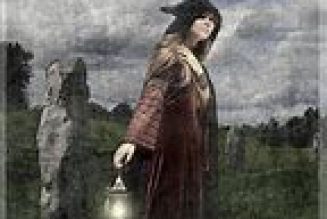Solitary Pagan witches are practitioners of witchcraft who choose to work alone, rather than as part of a coven or group. One of the most important aspects of their practice is the Wheel of the Year, which is a series of eight festivals that celebrate the changing seasons and the cycles of nature. These festivals are based on the ancient agricultural calendar and are observed by Pagans and Witches all over the world.
For Solitary Pagans, the Wheel of the Year is a way to connect with the natural world and to honour the changing seasons. Each festival has its own unique traditions and rituals, which are often adapted to suit the individual practitioner’s needs and beliefs. Some Pagans choose to celebrate the festivals alone, while others may come together with other like-minded individuals to mark the occasion. Either way, the Wheel of the Year is a powerful tool for spiritual growth and connection.
In this article, we will explore the Solitary Pagan Witch’s Wheel of the Year in more detail, looking at each of the eight festivals and their significance. We will also examine some of the rituals and practices associated with each festival, and how they can be adapted to suit individual needs and beliefs. Whether you are a seasoned practitioner or a curious beginner, this article will provide a fascinating insight into the world of Solitary Pagan Witchcraft.
The Wheel of the Year
What is the Wheel of the Year?
The Wheel of the Year is a concept that refers to the annual cycle of seasonal festivals celebrated by many modern Pagan and Wiccan traditions. It is based on the ancient agricultural calendar, which was used by many cultures around the world to mark the changing seasons and the cycles of nature.
The Wheel of the Year is divided into eight Sabbats, which are celebrated throughout the year. These Sabbats mark the solstices, equinoxes, and the points in between, and are associated with different themes, energies, and deities.
The Eight Sabbats
The eight Sabbats of the Wheel of the Year are:
- Samhain: celebrated on October 31st, marking the end of the harvest season and the beginning of the winter months. It is a time to honour the dead and to reflect on the cycle of life and death.
- Yule: celebrated on the winter solstice, which falls between December 20th and 23rd, depending on the year. It is a time to celebrate the return of the sun and the promise of new life.
- Imbolc: celebrated on February 2nd, marking the midpoint between the winter solstice and the spring equinox. It is a time to honour the goddess Brigid and to celebrate the return of spring.
- Ostara: celebrated on the spring equinox, which falls between March 19th and 22nd, depending on the year. It is a time to celebrate the return of the light and the renewal of life.
- Beltane: celebrated on May 1st, marking the beginning of the summer months. It is a time to celebrate fertility, growth, and the union of the god and goddess.
- Litha: celebrated on the summer solstice, which falls between June 20th and 23rd, depending on the year. It is a time to celebrate the peak of the sun’s power and the abundance of the earth.
- Lughnasadh: celebrated on August 1st, marking the beginning of the harvest season. It is a time to honour the god Lugh and to give thanks for the bounty of the earth.
- Mabon: celebrated on the autumn equinox, which falls between September 20th and 23rd, depending on the year. It is a time to celebrate the balance between light and dark and to give thanks for the harvest.
The Solstices and Equinoxes
The solstices and equinoxes are the four major turning points of the Wheel of the Year. They mark the changing of the seasons and the balance between light and dark.
The winter solstice is the shortest day of the year and the longest night. It is a time to celebrate the return of the sun and the promise of new life.
The spring equinox marks the beginning of spring and the return of the light. It is a time to celebrate growth, renewal, and new beginnings.
The summer solstice is the longest day of the year and the shortest night. It is a time to celebrate the peak of the sun’s power and the abundance of the earth.
The autumn equinox marks the beginning of autumn and the balance between light and dark. It is a time to give thanks for the harvest and to prepare for the coming winter.
Overall, the Wheel of the Year is a powerful tool for connecting with the cycles of nature and the energies of the universe. By celebrating the Sabbats and honouring the solstices and equinoxes, Pagans and Witches can deepen their spiritual practice and connect with the divine in new and meaningful ways.






